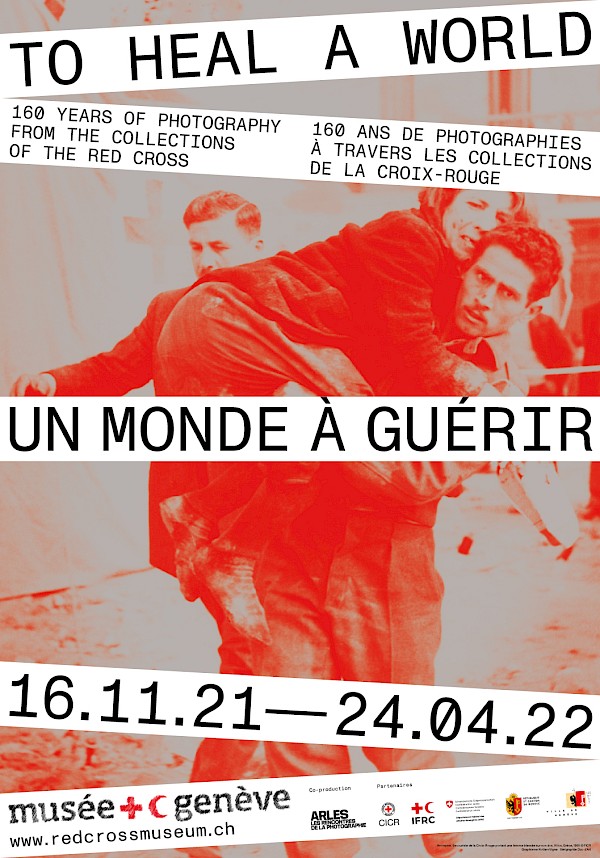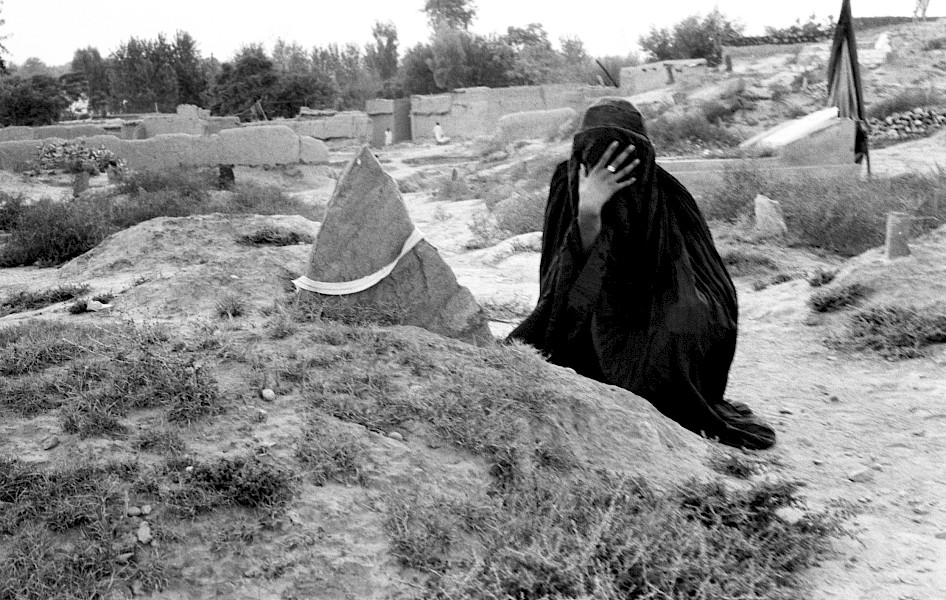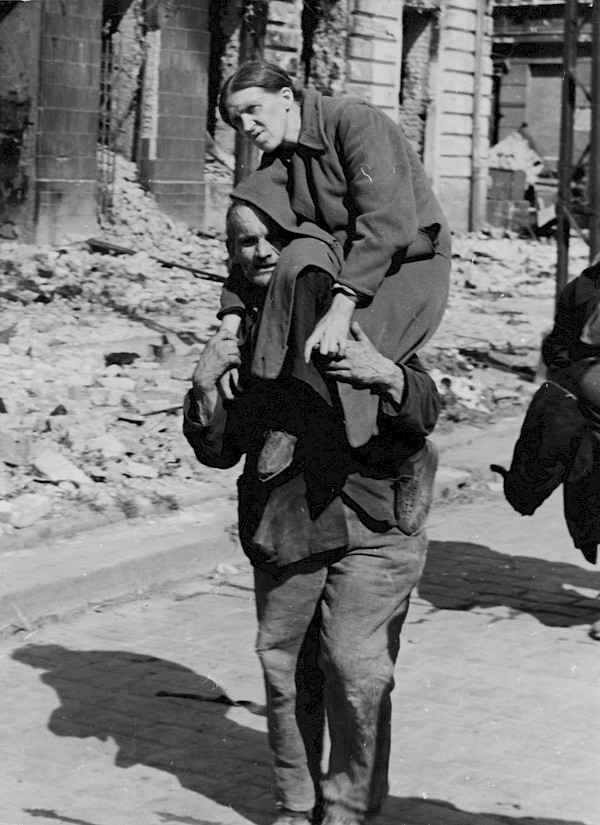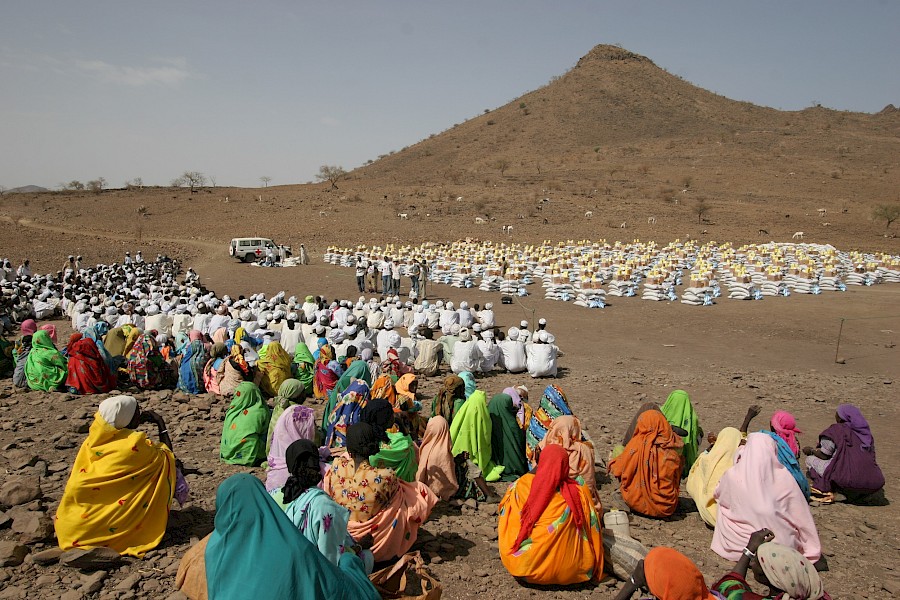A photograph reassessed by Brigitte Troyon
Bezeichnung
Der Inhalt dieser Seite ist derzeit nicht auf Deutsch verfügbar.
Photographs can reveal harsh realities, but they can also present idealized or dramatized visions of humanitarian action. A tour through a century and a half’s worth of images in the Red Cross archives makes plain how photographs reproduce, reinforce and reinvent humanitarian narratives. Photography has long been seen as objective and reliable, but all images are part of a broader discourse. They are used not only to link Geneva and the field, but also donors and beneficiaries. Interpretations of a given image are also fluid. Our gaze and that of the photographer are never neutral, and every individual point of view is influenced by the social, political and cultural context. We think we understand what we are seeing when we look at humanitarian photographs, and yet something is always hidden just outside the frame. Photographs can perpetuate stereotypes, and their meaning can change over time. What they show us is never a purely factual representation of reality. And yet, we in the 21st century still have strong faith in photography as fact. It is therefore all the more important to step back and question what we see. Is it still true that a picture is worth a thousand words?
In the exhibition TO HEAL A WORLD, various experts provided an astute analysis of images that, at first glance, appear to allow for only one interpretation. Reassessing what the images actually show reveals just how complex they – and the humanitarian work they depict – truly are. At a time of visual media saturation, we can get a lot out of stepping back and reassessing images from the past.
Brigitte Troyon works at the International Committee of the Red Cross (ICRC) since 31 years.
Credits
Eddie Gerald, ICRC delegate visits Eshel prison, Israel, 2016 © ICRC
Tags
VideosExhibitionsVerknüpfte Ressourcen
To Heal a World
16.11.2021 bis 24.04.2022
Exhibition, Im Museum

To Heal a World at the Rencontres de la Photographie d’Arles
04.07.2022 bis 25.09.2022
Exhibition, Off-site

To Heal a World by Pascal Hufschmid
Videos, Exhibitions

A photograph reassessed by Valérie Gorin
Videos, Exhibitions

A photograph reassessed by Davide Rodogno
Videos, Exhibitions

Military cemetery
Images, Exhibitions

Civilians headed to Pruszków
Images, Exhibitions

ICRC food distribution
Images, Exhibitions

A photograph reassessed by Brigitte Troyon
Bezeichnung
Der Inhalt dieser Seite ist derzeit nicht auf Deutsch verfügbar.
Photographs can reveal harsh realities, but they can also present idealized or dramatized visions of humanitarian action. A tour through a century and a half’s worth of images in the Red Cross archives makes plain how photographs reproduce, reinforce and reinvent humanitarian narratives. Photography has long been seen as objective and reliable, but all images are part of a broader discourse. They are used not only to link Geneva and the field, but also donors and beneficiaries. Interpretations of a given image are also fluid. Our gaze and that of the photographer are never neutral, and every individual point of view is influenced by the social, political and cultural context. We think we understand what we are seeing when we look at humanitarian photographs, and yet something is always hidden just outside the frame. Photographs can perpetuate stereotypes, and their meaning can change over time. What they show us is never a purely factual representation of reality. And yet, we in the 21st century still have strong faith in photography as fact. It is therefore all the more important to step back and question what we see. Is it still true that a picture is worth a thousand words?
In the exhibition TO HEAL A WORLD, various experts provided an astute analysis of images that, at first glance, appear to allow for only one interpretation. Reassessing what the images actually show reveals just how complex they – and the humanitarian work they depict – truly are. At a time of visual media saturation, we can get a lot out of stepping back and reassessing images from the past.
Brigitte Troyon works at the International Committee of the Red Cross (ICRC) since 31 years.
Credits
Eddie Gerald, ICRC delegate visits Eshel prison, Israel, 2016 © ICRC
Tags
VideosExhibitionsVerknüpfte Ressourcen
To Heal a World
16.11.2021 bis 24.04.2022
Exhibition, Im Museum

To Heal a World at the Rencontres de la Photographie d’Arles
04.07.2022 bis 25.09.2022
Exhibition, Off-site

To Heal a World by Pascal Hufschmid
Videos, Exhibitions

A photograph reassessed by Valérie Gorin
Videos, Exhibitions

A photograph reassessed by Davide Rodogno
Videos, Exhibitions

Military cemetery
Images, Exhibitions

Civilians headed to Pruszków
Images, Exhibitions

ICRC food distribution
Images, Exhibitions


